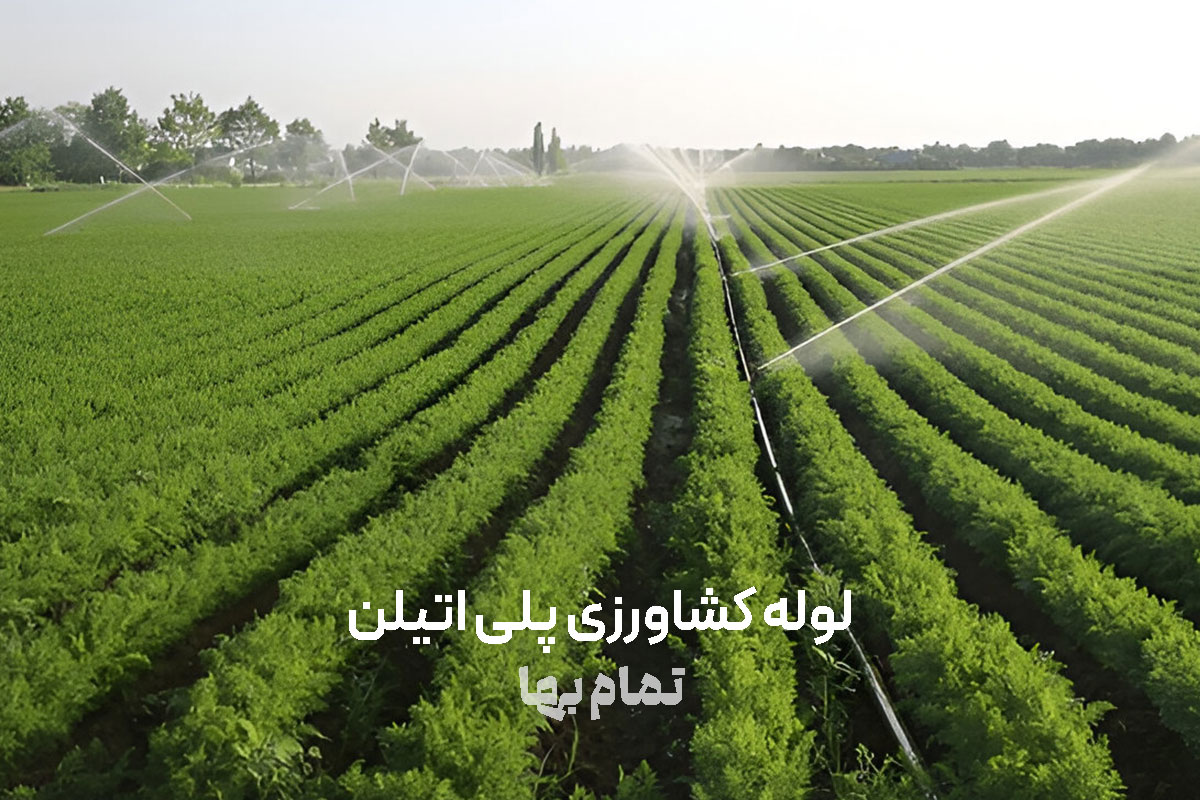Agricultural polyethylene pipes, as the new generation of fluid conveyance in farms and orchards, are considered a reliable and economical replacement for metal and PVC pipes. High flexibility, resistance to UV radiation and the chemicals in fertilizers and pesticides, low weight and long service life are only part of the advantages that have made these pipes the backbone of drip, sprinkler and pressurized irrigation systems. The following explains the technical aspects, standards, installation and maintenance methods, and key points for selecting these pipes.
Raw Material Composition and Pressure Classification
The polyethylene used in agricultural pipes is mainly offered in two grades, PE80 and PE100. With higher density and superior mechanical properties, PE100 allows higher nominal pressure with a thinner wall; as a result, the overall network weight and transportation costs are reduced. UV light stabilizers (Light Stabilizer UV) and antioxidants are also included in the formulation to ensure long-term resistance to photothermal degradation.

National and International Standards
ISO 4427 / EN 12201: Global framework for dimensions, tolerances, and hydrostatic test methods.
ISIRI 14427: Iranian equivalent of ISO 4427 for water-supply pipes.
DIN 8074/8075: Popular for low-pressure lines and pressurized irrigation due to a track record of use in Middle Eastern projects.
Professional contractors in tenders invariably request a Batch Release test certificate (including MFR, OIT, and tensile results) to maintain end-to-end quality traceability.
Table of Nominal Dimensions, Pressure Rating, and Wall Thickness
Outside diameter (mm) Pressure class (bar) Wall thickness PE80 (mm) Wall thickness PE100 (mm)
20 4 1.9 1.6
25 6 2.3 1.9
40 10 3.7 3.0
63 12.5 5.8 4.7
110 16 10.0 8.1
Design of Pressurized Irrigation Systems
Pressure Drop and Allowable Velocity
To prevent cavitation and preserve uniform water distribution, flow velocity in trunk lines should not exceed 1.5 m/s. Software such as EPANET or RainCAD can calculate head losses accurately by defining diameter, length, and relative roughness (k≈0.01 mm for PE). A Christiansen Uniformity (CU) above 85% is typically targeted.
Network Layout
Main Line: From reservoir or pump to distribution sections, typically 90–160 mm diameter.
Sub-Main: Distributor to laterals, 40–75 mm diameter.
Laterals: Equipped with drippers or sprinklers, often soft PE 16 or 20 mm with a 4-bar pressure class.
Joining Methods
Electrofusion: Ideal for critical lines and larger diameters; the embedded heating element melts the two PE surfaces into a monolithic joint.
Butt Fusion: The most common method in large projects. Final quality depends on precise alignment of pipe ends and controlled hydraulic pressure of the machine.
Ring-lock and Compression Fittings: Quick to install in the field, but recommended for pressures below 10 bar.
Installation Cost Comparison Table (Sample 20-Hectare Drip Irrigation Project)
Cost item PVC pipe (rial) Steel pipe (rial) PE100 pipe (rial)
Pipe & fittings purchase 9,800,000,000 13,200,000,000 8,900,000,000
Transport & loading 820,000,000 1,480,000,000 620,000,000
Welding or solvent bonding 1,150,000,000 2,400,000,000 950,000,000
10-year repair costs 2,300,000,000 3,700,000,000 1,100,000,000

Periodic Maintenance and Inspection
Annual pressure test: Apply 1.5× the operating pressure for 2 hours; no pressure drop indicates sound joints.
UV check: Pipes exposed to direct radiation should be evaluated every 3 years using the Carbonyl Index test.
Scale removal: Injecting a dilute nitric acid solution (<0.5%) is useful for removing calcium carbonate deposits in constant-pressure lines.
Recycling and Environmental Sustainability
At end of life, polyethylene is mechanically recyclable up to 100%. The resulting flakes are used in manufacturing sewer pipes or non-pressure products. ISO 17422 provides life-cycle assessment (LCA) guidance showing that the carbon footprint of PE pipe is on average 35% lower than an equivalent steel pipe.
The Role of Tamambaha Store
By directly supplying PE100 polyethylene pipes and electrofusion fittings from reputable domestic manufacturers, Tamambaha enables authenticity tracking, provides test certificates, and ensures timely delivery for growers and irrigation contractors. The technical team helps reduce installation costs and minimize early network failures through free hydraulic advice and hands-on butt-fusion training tailored to practical field needs.
